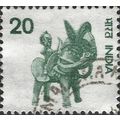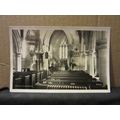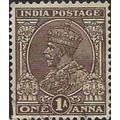Berlin, Germany - Gedächtniskirche, church, night - RP postcard, stamp 1953 pmk
- Condition : Used
- Dispatch : 2 Days
- Brand : None
- ID# : 179880143
- Quantity : 1 item
- Views : 235
- Location : United Kingdom

- Seller : justthebook (+1704)
- Barcode : None
- Start : Fri 19 Apr 2019 00:04:12 (BST)
- Close : Run Until Sold
- Remain : Run Until Sold
More Listings from This Seller view all
Seller's Description
- Postcard
- Picture / Image: Berlin - Gedächtniskirche (Kaiser Wilhelm Church)
- Publisher: Kunst und Bild, Berlin
- Postally used: yes
- Stamp: Germany Technische Hochshule Charlottenberg 20 pf red
- Postmark(s): Berlin Charlottenberg 1953 slogan (see scan)
- Sent to: JK Costain, 33 Cambridge Avenue, Lancaster, England
- Notes / condition:
- Postcard
Please ask if you need any other information and I will do the best I can to answer.
------------------------------------------------
Postage and packing charge should be showing for your location (contact if not sure).
UK - PayPal, Cheque (from UK bank) or postal order
I will give a full refund if you are not fully satisfied with the postcard.
----------------------------------------------
The Kaiser Wilhelm Memorial Church (in German: Kaiser-Wilhelm-Gedächtniskirche, but mostly just known as Gedächtniskirche [ɡəˈdɛçtnɪsˈkɪʁçə]) is a Protestant church affiliated with the Evangelical Church in Berlin, Brandenburg and Silesian Upper Lusatia, a regional body of the Evangelical Church in Germany. It is located in Berlin on the Kurfürstendamm in the centre of the Breitscheidplatz.
The original church on the site was built in the 1890s. It was badly damaged in a bombing raid in 1943. The present building, which consists of a church with an attached foyer and a separate belfry with an attached chapel, was built between 1959 and 1963. The damaged spire of the old church has been retained and its ground floor has been made into a memorial hall.
The Memorial Church today is a famous landmark of western Berlin, and is nicknamed by Berliners "der hohle Zahn", meaning "the hollow tooth".
The construction of the church was part of a Protestant church-building programme initiated by Kaiser Wilhelm II and his consort Augusta Victoria to counter the German labour movement and socialist movement by a return to traditional religious values. Wilhelm II decided to name the church in honor of his grandfather Kaiser Wilhelm I.[1] The competition for the design was won by Franz Schwechten, member of the Bauakademie who had distinguished himself with the design of the Anhalter Bahnhof. Schwechten, a native Rhinelander, planned for a large church to be built in a Neo-Romanesque style modelled on the Bonn Minster with a Tuff stone facade. His design included 2,740 square metres (29,500 sq ft) of wall mosaic, a 113 metres (371 ft)-high spire (now 71 metres, or 233 ft) and a nave which seated over 2,000 people.[1]
The foundation stone was laid on 22 March 1891, which was Wilhelm I's birthday.[2] The church was dedicated on 1 September 1895,[2] the eve of Day of Sedan. At that time, the entrance hall in the lower section had not yet been completed; that part of the church was not opened and consecrated until 22 February 1906.[3] Construction costs mounted to 6.8 million gold mark, raised primarily through donations. The church design, quite unfamiliar in the Brandenburg region, inspired several architectural projects in the surrounding area, like the Romanisches Café building, also designed by Schwechten.
In World War II, on the night of 23 November 1943, the church was extensively damaged in an air raid.[1] Yet it was by no means beyond repair. A remnant of the spire and much of the entrance hall survived intact, as did the altar and the baptistry.[4] After the war, in 1947, the curatorium of the Kaiser-Wilhelm-Gedächtniskirche foundation (Stiftung) decided in favor of rebuilding the church, but the manner in which this should be done was contentiously debated until the late 1950s.[5] In a two-phased design competition in 1956, the question of whether the secured remnant of the spire should be torn down or preserved was left open.[5] The winner of the competition, architect Egon Eiermann, initially proposed, in both his submissions, for the remnant of the old spire to be torn down, in favor of a completely new construction.[5] But that plan provoked a public outcry in which the ruined tower was characterized as the "heart of Berlin"; as a result Eiermann revised the design to preserve the tower.[5] He had most of the remaining structure pulled down, in order to build the modern church that now occupies most of the site.
Listing Information
| Listing Type | Gallery Listing |
| Listing ID# | 179880143 |
| Start Time | Fri 19 Apr 2019 00:04:12 (BST) |
| Close Time | Run Until Sold |
| Starting Bid | Fixed Price (no bidding) |
| Item Condition | Used |
| Bids | 0 |
| Views | 235 |
| Dispatch Time | 2 Days |
| Quantity | 1 |
| Location | United Kingdom |
| Auto Extend | No |

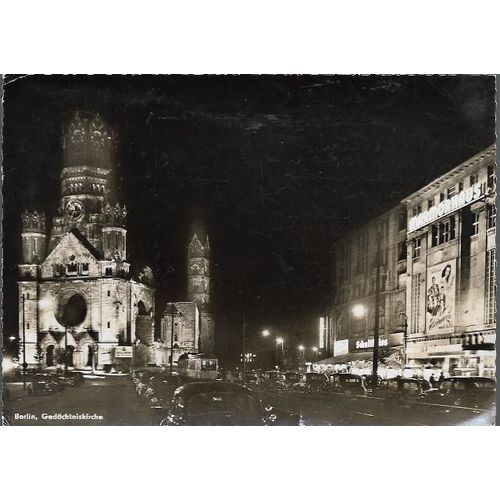
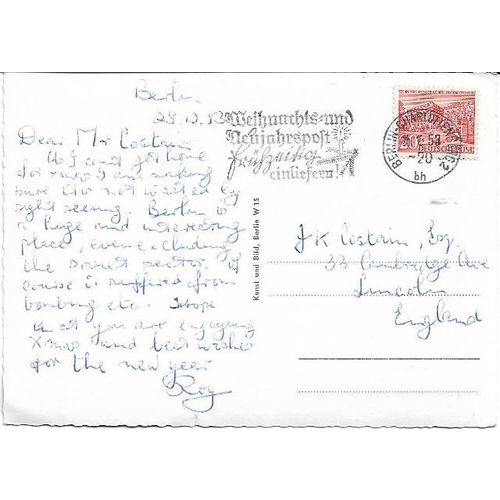

 for 1 item(s)
for 1 item(s)












